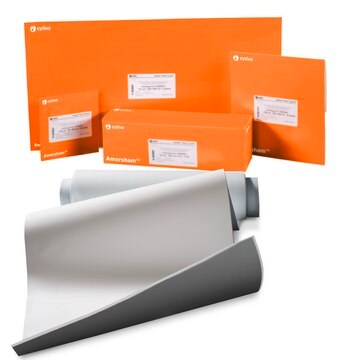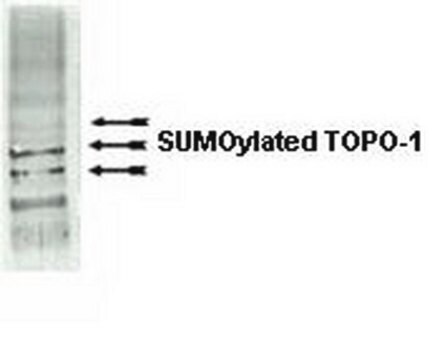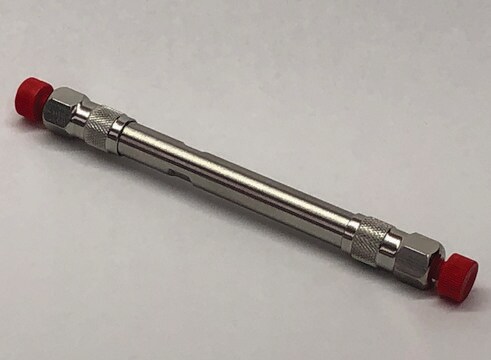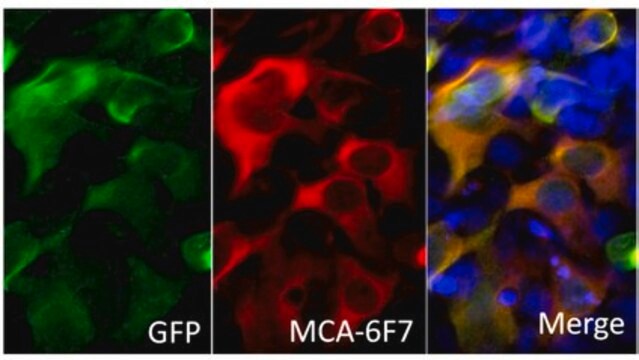MAB3786-C
Anti-APC Antibody, CT, clone C-APC Antibody 28.9, Ascites Free
clone C-APC 28.9, from mouse
Synonym(s):
Adenomatous polyposis coli protein, Deleted in polyposis 2.5, Protein APC
About This Item
Recommended Products
biological source
mouse
Quality Level
antibody form
purified immunoglobulin
antibody product type
primary antibodies
clone
C-APC 28.9, monoclonal
species reactivity
human
technique(s)
immunocytochemistry: suitable
immunofluorescence: suitable
immunohistochemistry: suitable (paraffin)
western blot: suitable
isotype
IgG1κ
NCBI accession no.
UniProt accession no.
shipped in
wet ice
target post-translational modification
unmodified
Gene Information
human ... APC(324)
General description
Specificity
Immunogen
Application
Immunocytochemistry Analysis: A representative detected an increased APC expression in human eyelid adipose-derived stem cells (hEASCs) after neuroinduction at passage 8 (Zhou, J., et al. (2014). J. Cell. Mol. Med. 18(2):326-343).
Immunofluorescence Analysis: A representative lot detected a granular APC staining pattern at a subapical region of epithelial cells in fallopian mucosa by fluorescent immunohistochemistry staining of paraffin-embedded, paraformaldehyd-fixed fallopian tube tissue sections (Kessler, M., et al. (2012). Am. J. Pathol. 180(1):186-198).
Epigenetics & Nuclear Function
Cell Cycle, DNA Replication & Repair
Quality
Target description
Physical form
Storage and Stability
Other Notes
Disclaimer
Not finding the right product?
Try our Product Selector Tool.
Storage Class
12 - Non Combustible Liquids
wgk_germany
WGK 1
flash_point_f
Not applicable
flash_point_c
Not applicable
Certificates of Analysis (COA)
Search for Certificates of Analysis (COA) by entering the products Lot/Batch Number. Lot and Batch Numbers can be found on a product’s label following the words ‘Lot’ or ‘Batch’.
Already Own This Product?
Find documentation for the products that you have recently purchased in the Document Library.
Our team of scientists has experience in all areas of research including Life Science, Material Science, Chemical Synthesis, Chromatography, Analytical and many others.
Contact Technical Service







